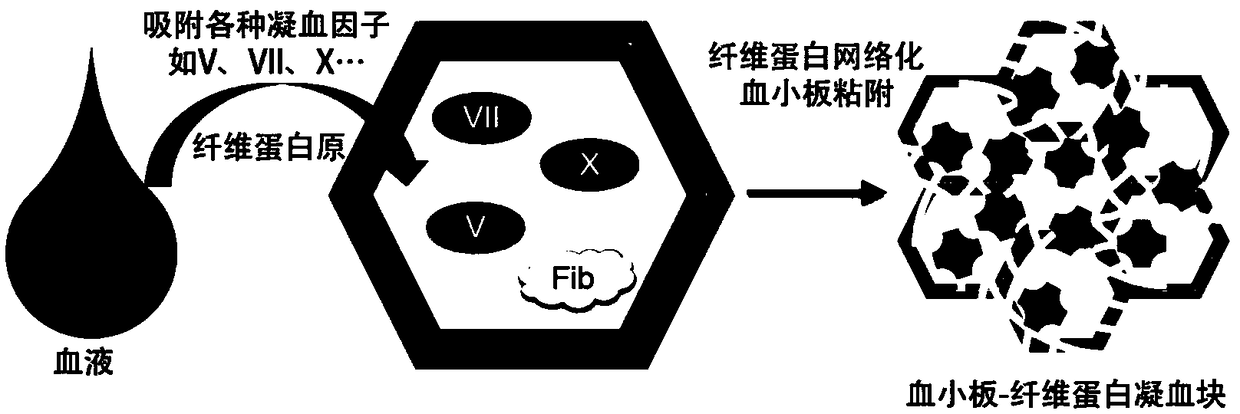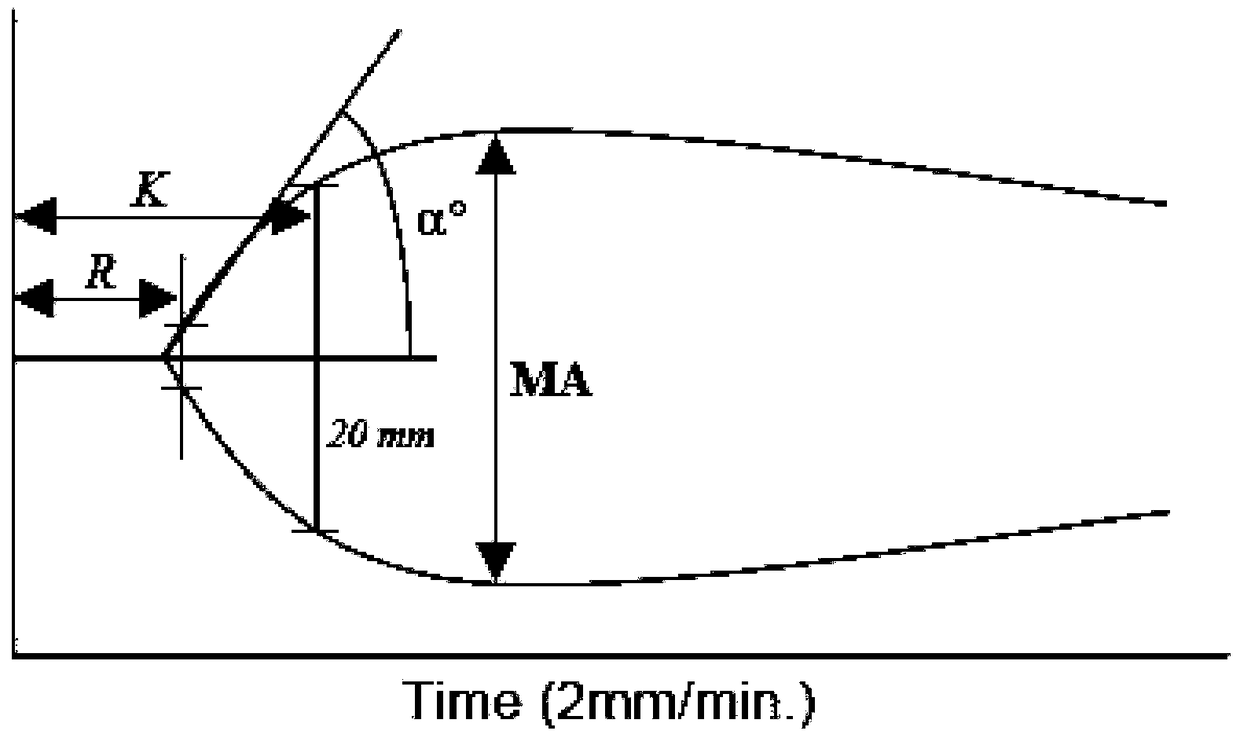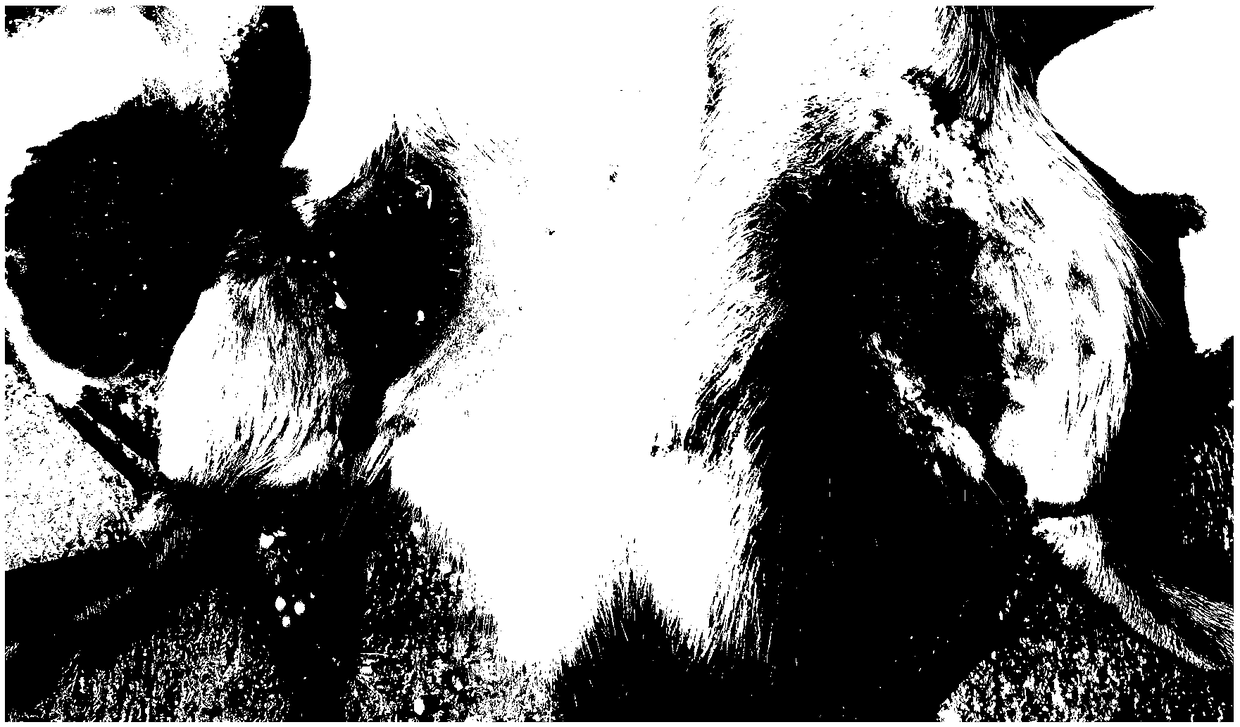Composite hemostatic material for external trauma and preparation method thereof
A technology of hemostatic material and porous material, which is used in pharmaceutical formulations, bandages, drug delivery, etc., can solve the problem of inability to achieve rapid hemostasis in acute bleeding, and achieve the effects of easy long-term storage, high safety, and good biocompatibility.
- Summary
- Abstract
- Description
- Claims
- Application Information
AI Technical Summary
Problems solved by technology
Method used
Image
Examples
Embodiment 1
[0040] A preparation method of a composite hemostatic material for trauma, comprising the following steps:
[0041] (1) Diatomaceous earth and calcium nitrate solution are mixed evenly, and the mass ratio of diatomite and calcium nitrate is 5:1, room temperature is dried, then gained material is dried, roasted 12 hours at 500 degrees centigrade;
[0042] (2) dissolving chitosan in water, adding the porous material processed in step (1), the mass ratio of porous material and chitosan is 20:1, mix well, and dry.
Embodiment 2
[0044] A preparation method of a composite hemostatic material for trauma, comprising the following steps:
[0045] (1) Mix porous material activated carbon, diatomite, kaolin, and montmorillonite with sodium sulfate, calcium nitrate, and ferric chloride solution in a ratio of 1:1:1:1, and the mass ratio of porous material to inorganic salt is 10 : 1, room temperature drying, then gained material is dried, roasted 5 hours at 600 degrees centigrade;
[0046] (2) Dissolve the agarose in water, add the porous material treated in step (1), the mass ratio of the porous material to the agarose is 4:1, mix evenly, and dry.
Embodiment 3
[0048] A preparation method of a composite hemostatic material for trauma, comprising the following steps:
[0049] (1) Dissolve the surfactant (cetyltrimethylammonium bromide) in an aqueous solution of calcium chloride, add sodium silicate under stirring, continue to stir evenly, and let stand for 24 hours, the reaction temperature is 5-80 degrees Celsius The mass ratio of the synthetic components is surfactant: sodium silicate=5:1, calcium chloride aqueous solution: sodium silicate=50:1 (mass ratio); the concentration of calcium chloride aqueous solution is 10mmol / L;
[0050] (2) Heat the material obtained in step (1) at 100°C for 24 hours, filter and dry the material; after drying, bake at 700°C for 12 hours to obtain the artificially synthesized porous material.
[0051] (3) the artificially synthesized porous material obtained in step (2) is mixed evenly with sodium dihydrogen phosphate solution, the mass ratio of the artificially synthesized porous material and sodium di...
PUM
| Property | Measurement | Unit |
|---|---|---|
| Aperture | aaaaa | aaaaa |
Abstract
Description
Claims
Application Information
 Login to View More
Login to View More - R&D
- Intellectual Property
- Life Sciences
- Materials
- Tech Scout
- Unparalleled Data Quality
- Higher Quality Content
- 60% Fewer Hallucinations
Browse by: Latest US Patents, China's latest patents, Technical Efficacy Thesaurus, Application Domain, Technology Topic, Popular Technical Reports.
© 2025 PatSnap. All rights reserved.Legal|Privacy policy|Modern Slavery Act Transparency Statement|Sitemap|About US| Contact US: help@patsnap.com



